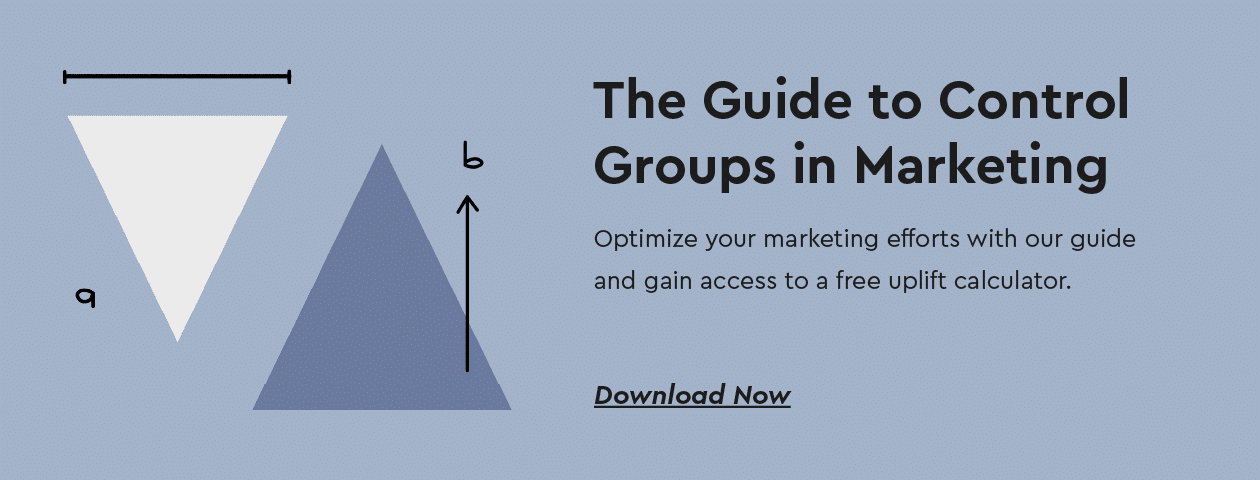What is Customer Analytics?
Customer analytics, also known as customer intelligence, is a customer-centric approach to managing business decisions, based on analyzing data available about customers and their behavior. It is widely accepted that today, using a metric-based approach to managing a company’s marketing retention and customer relationship management is critical to successful business management.
How to treat every campaign like a marketing experiment
The Rising Bar of Customer Analytics and Data Analysis
In the past, the technology to efficiently and accurately crunch large amounts of customer data in order achieve actionable analytics was simply unavailable. Then, as the technology became available, businesses that leveraged it effectively gained significant competitive advantage from using customer data analytics.
The reality today is that most companies are using some form of customer analytics, thus neutralizing the competitive advantage it once provided. Companies are therefore looking to go deeper than “standard” customer data analytics allows in order to increase customer marketing efficiencies and regain the significant competitive advantage that customer analytics offered its early adopters.
Related: The Importance of Data Analytics in Retail

Customer Analytics Challenges
The first level of difficulty in deriving accurate and actionable customer intelligence from a company’s data is that the relevant data is scattered among various databases, in different departments, using different formats and naming conventions. In order to truly understand a customer, it is critical to assemble the all-important “single customer view” (or, 360-degree customer view): a single, flat, consistent conglomeration of all the data relevant to each customer. There is no other way to look at customer holistically, including their demographics, behavior, preferences and interests. This is easier said than done, and can sometimes take many months of effort.
Once all the data is aggregated, cleansed and synchronized, the next challenge is deriving useful meaning from the data – customer intelligence – so that optimum and timely business decisions can be made based on the data. Mainstream business intelligence (BI) and customer analytics applications approach this challenge with the facilities to create a battery of queries, dashboards and reports to visualize what’s going on.
However, this passive – and historical – approach will not provide more than the “standard” level of customer analytics that the competition has as well.
So What is Deep Customer Analytics?
Deep customer analytics goes further to deliver the advanced customer insight which allows informed managerial decisions that will outpace the competition. When cutting-edge customer analytics software can predict in advance exactly what marketing action will have the greatest impact on every individual customer, deep customer analytics has been achieved!
There are a number of advanced technological abilities which, together, enable deep customer analytics and actionable customer intelligence. The six key differentiators between standard customer data analytics and deep customer analytics are:
- Segmenting customers into small groups and addressing individual customers based on actual behaviors – instead of hard-coding any pre-conceived notions or assumptions of what makes customers similar to one another, and instead of only looking at aggregated/averaged data which hides important facts about individual customers
- Tracking customers and how they move among different segments over time (i.e., dynamic segmentation), including customer lifecycle context and cohort analysis – instead of just determining in what segments customers are now without regard for how they arrived there
- Accurately predicting the future behaviors of customers (e.g., convert, churn, spend more, spend less) using predictive customer behavior modeling techniques – instead of just looking in the rear-view mirror of historical reports
- Using advanced calculations to determine the customer lifetime value (LTV) of every customer and basing decisions on it – instead of looking only at the short-term revenue that a customer can bring the company
- Knowing, based on objective metrics, exactly what marketing actions to do now, for each customer, in order to maximize the long-term value of every customer – instead of trying to figure out what to do based on a dashboard or pile of reports.
- Employing marketing machine learning technologies that can reveal insights and make recommendations for improving customer marketing that human marketers are unlikely to spot on their own.
The Guide to Control Groups in Marketing
Optimize your marketing efforts with our guide and gain access to a free uplift calculator.
The Advantages of Deep Customer Analytics Software
Companies invest a lot of time, money and people to make sense of their customer data and use it to drive optimal decision-making processes. Unfortunately, most customer data analytics and business intelligence solutions simply do not have the capabilities described above. The result is a frustrating and difficult situation for marketers, CRM managers and retention experts as they struggle to leverage their data to achieve customer intelligence, enabling them to figure out exactly what to do next for each customer.
On the other hand, a deep customer analytics application such as Optimove brings an automated, closed-loop and action-oriented solution which eliminates the frustration and delivers the practical answers marketers need, such as:
- What marketing actions will be most effective to convert each free user into a paying customer?
- Which customers are about to churn, and what marketing actions will be most effective to retain each one?
- Which customers will reduce their spending in the future, and what marketing actions will be most effective to get them to maintain their current spending level?
- Which customers have the potential to become big spenders, and what marketing actions will be most effective to increase the spend of each one?
Without a holistic look at the customer – and the six key capabilities described above – no customer data analytics solution will be able to deliver accurate answers to these questions and others like them, enabling brands to achieve the holy grail of customer intelligence.

Start Using Deep Customer Analytics Software Today!
Contact us today to learn how you can use Optimove to easily maximize the impact of every marketing action in order to convert more customers, increase the spend of existing customers and reduce customer churn.
Get a personalized tour of Optimove
Let us show you how to go from tens to hundreds of segments


